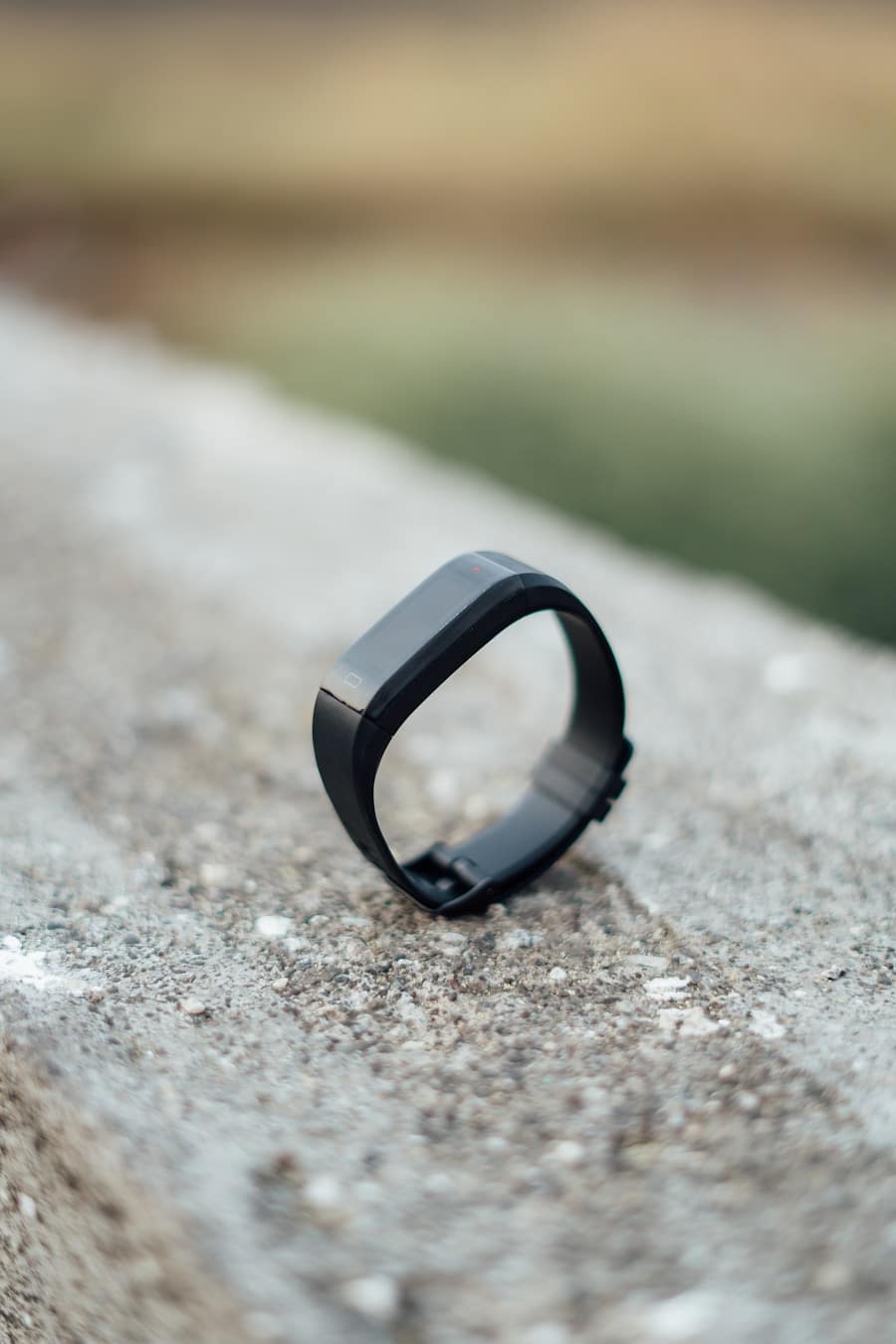In recent years, the rise of wearable technology has transformed the way individuals monitor their health and wellness. Among these innovations, smart rings have emerged as a compact and stylish alternative to traditional fitness trackers and smartwatches. These rings not only serve as fashionable accessories but also incorporate advanced technology to track various health metrics, including hydration levels.
Hydration is a critical aspect of overall health, influencing everything from physical performance to cognitive function. As awareness of the importance of staying hydrated grows, so does the demand for effective hydration tracking solutions. Smart rings offer a unique approach to this need, providing users with real-time data on their hydration status in a discreet and convenient manner.
The integration of hydration tracking into smart rings represents a significant advancement in personal health monitoring. Unlike conventional methods that rely on manual logging or infrequent assessments, smart rings can continuously monitor hydration levels throughout the day. This capability is particularly beneficial for athletes, fitness enthusiasts, and individuals with specific health conditions that require careful management of fluid intake.
By leveraging cutting-edge sensors and algorithms, smart rings can provide insights that empower users to make informed decisions about their hydration habits, ultimately promoting better health outcomes.
Key Takeaways
- Smart rings are wearable devices that can track hydration levels in real-time, providing valuable insights for maintaining optimal hydration.
- Real-time hydration tracking is based on the science of measuring changes in the body’s electrical properties, which are influenced by hydration levels.
- Smart rings use bioimpedance sensors to measure hydration levels by analyzing the body’s tissue composition and fluid distribution.
- The advantages of using smart rings for hydration tracking include convenience, continuous monitoring, and personalized hydration recommendations.
- Limitations and challenges of smart rings for hydration tracking include accuracy issues, limited compatibility with other devices, and cost considerations.
The Science Behind Real-Time Hydration Tracking
Understanding the science behind hydration tracking is essential for appreciating how smart rings function. Hydration status is typically assessed through various physiological markers, including blood plasma osmolality, urine concentration, and electrolyte balance. These indicators reflect the body’s fluid levels and can signal whether an individual is adequately hydrated or at risk of dehydration.
Real-time hydration tracking aims to provide continuous feedback on these parameters, allowing users to adjust their fluid intake proactively. One of the primary physiological mechanisms involved in hydration regulation is the role of osmoreceptors located in the hypothalamus. These receptors detect changes in blood osmolality, which can indicate dehydration when levels rise due to a lack of fluid intake.
In response, the body triggers thirst signals and releases antidiuretic hormone (ADH) to conserve water. Smart rings utilize similar principles by measuring physiological signals that correlate with hydration status, enabling users to receive timely alerts about their hydration needs.
How Smart Rings Measure Hydration Levels
Smart rings employ a variety of sensors and technologies to measure hydration levels effectively. One common method involves the use of bioimpedance analysis, which assesses the resistance of body tissues to electrical currents. When the body is well-hydrated, it conducts electricity more efficiently due to the presence of water in cells and extracellular spaces.
Conversely, dehydration increases resistance, allowing smart rings to estimate hydration levels based on these electrical properties. In addition to bioimpedance, some smart rings incorporate optical sensors that utilize light absorption and reflection techniques to gauge hydration status. These sensors can analyze changes in blood volume and composition through the skin, providing insights into hydration levels without invasive procedures.
By combining data from multiple sensors and employing sophisticated algorithms, smart rings can deliver accurate and real-time assessments of an individual’s hydration status.
Advantages of Using Smart Rings for Hydration Tracking
The advantages of using smart rings for hydration tracking are manifold. One of the most significant benefits is their compact size and unobtrusive design. Unlike larger wearables that may be cumbersome during physical activities or daily tasks, smart rings can be worn comfortably throughout the day without drawing attention.
This convenience encourages consistent use, allowing users to receive continuous feedback on their hydration levels. Moreover, smart rings often come equipped with advanced connectivity features that enable seamless integration with smartphones and other devices. Users can access detailed hydration data through dedicated apps, which may include personalized recommendations based on individual activity levels and environmental conditions.
This level of customization enhances the user experience and empowers individuals to take charge of their hydration habits effectively.
Limitations and Challenges of Smart Rings for Hydration Tracking
Despite their advantages, smart rings also face limitations and challenges in accurately tracking hydration levels. One primary concern is the variability in individual physiology; factors such as body composition, skin thickness, and even ambient temperature can influence sensor readings. As a result, some users may experience discrepancies in hydration data that could lead to confusion or misinterpretation of their hydration status.
Additionally, while smart rings are designed for continuous monitoring, battery life remains a critical consideration. Many smart rings require regular charging or have limited operational time before needing a recharge. This limitation can hinder their effectiveness as a reliable hydration tracking tool if users forget to charge them or if they run out of battery during critical periods when hydration monitoring is essential.
Comparison of Smart Rings with Other Hydration Tracking Devices
When comparing smart rings with other hydration tracking devices, several factors come into play, including accuracy, convenience, and user experience. Traditional methods such as water intake journals or manual logging apps require users to actively track their fluid consumption, which can be tedious and prone to human error. In contrast, smart rings automate this process by providing real-time data without requiring constant input from the user.
Wearable devices like smartwatches also offer hydration tracking features; however, they may not be as discreet as smart rings. While smartwatches provide a broader range of functionalities—such as notifications and fitness tracking—some users may prefer the simplicity and elegance of a ring for hydration monitoring alone. Furthermore, smart rings often have longer battery life compared to some smartwatches, making them more reliable for continuous use.
Tips for Using Smart Rings to Improve Hydration Levels
To maximize the benefits of using smart rings for hydration tracking, users should adopt specific strategies that enhance their overall hydration habits. First and foremost, it is essential to set personalized hydration goals based on individual activity levels, climate conditions, and overall health needs. Many smart ring applications allow users to input these parameters, enabling tailored recommendations that align with their lifestyle.
Another effective strategy involves integrating reminders into daily routines. Smart ring apps often feature customizable alerts that prompt users to drink water at regular intervals throughout the day. By establishing a routine that incorporates these reminders, individuals can develop healthier habits over time and ensure they meet their hydration goals consistently.
Future Developments in Smart Ring Technology for Hydration Tracking
The future of smart ring technology holds exciting possibilities for enhancing hydration tracking capabilities further. As research continues into non-invasive monitoring techniques, we may see advancements in sensor technology that improve accuracy and reliability in measuring hydration levels. Innovations such as advanced biosensors could provide even more precise readings by analyzing additional biomarkers related to fluid balance.
Moreover, the integration of artificial intelligence (AI) into smart ring applications could revolutionize how users interact with their hydration data. AI algorithms could analyze patterns in individual behavior and provide predictive insights about future hydration needs based on past activity levels and environmental factors.
As smart ring technology evolves, we may also witness increased collaboration between manufacturers and health professionals to develop standardized guidelines for hydration tracking. Such partnerships could enhance the credibility of smart ring data and encourage broader adoption among individuals seeking effective ways to manage their hydration levels. In conclusion, the intersection of smart ring technology and hydration tracking represents a promising frontier in personal health monitoring.
With ongoing advancements in sensor technology and data analytics, these devices are poised to play an increasingly vital role in helping individuals maintain optimal hydration levels for improved health and well-being.
If you’re interested in wearable technology, you may also want to check out this article on the top 5 smartwatches of 2023. Just like smart rings that track hydration levels, smartwatches offer a range of features that can help improve your overall health and wellness.
FAQs
What is a smart ring?
A smart ring is a wearable device that is worn on the finger and is equipped with technology to track various health and fitness metrics.
How do smart rings track hydration levels?
Smart rings track hydration levels by using sensors to measure the body’s electrical properties, such as skin temperature and conductivity, which can indicate hydration levels.
Are smart rings accurate in tracking hydration levels?
Smart rings have been shown to provide accurate measurements of hydration levels, although individual results may vary based on factors such as skin type and environmental conditions.
What are the benefits of using a smart ring to track hydration levels?
Using a smart ring to track hydration levels can help individuals stay aware of their body’s hydration status in real-time, leading to better overall health and performance.
Can smart rings provide real-time hydration alerts?
Yes, smart rings can provide real-time alerts to the wearer when hydration levels are low, prompting them to drink water and stay properly hydrated throughout the day.
Are smart rings suitable for all individuals?
Smart rings are generally suitable for most individuals, but it’s important to consider factors such as skin sensitivity and comfort when choosing a smart ring for hydration tracking.



